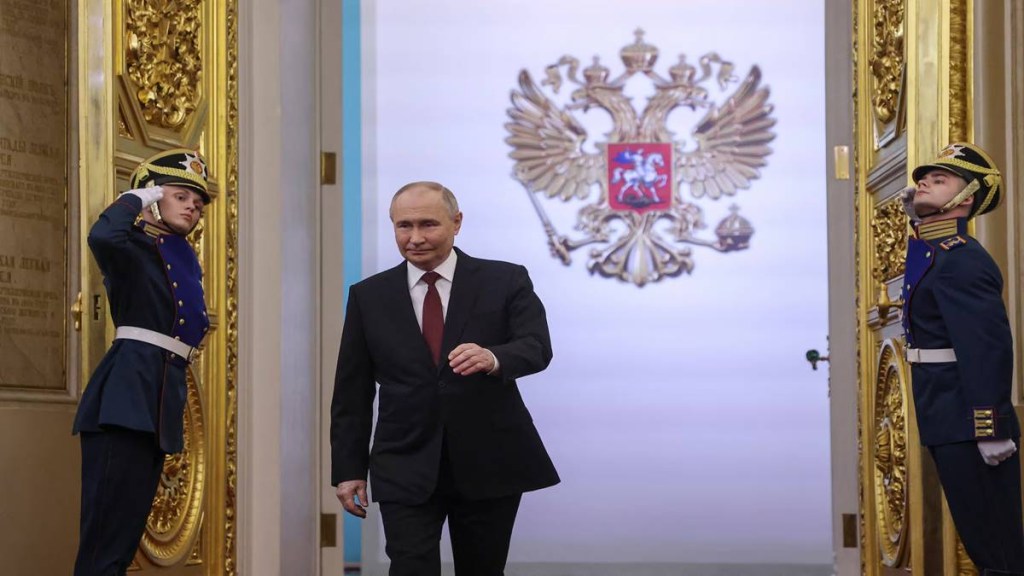In the annals of Russian history, Vladimir Putin has etched his name as the longest-serving leader since Joseph Stalin, a testament to his enduring influence over the past two decades. Barring a short period of Dmitry Medvedev (2008-2012), in which Putin remained the real ruler, Russia has not witnessed any change at the top. Putin has clearly become the longest ruler of a powerful country in the 21st century.
However, beyond the numerical milestone lies a narrative of shifting dynamics, particularly in Russia‘s relationship with the West. From the early days of cordiality to the current state of heightened tension, understanding Putin’s reign necessitates a nuanced examination of its evolution and implications, both domestically and on the global stage.
How to look at the long regime of Putin and Russia’s Relationship with the West?
“Putin’s long regime can be divided into two phases: the first phase (2000-2007) which was marked by rapid economic growth, military and political reforms and cordial ties with the West. The Obama administration also sought to ‘reset the button’, in an attempt to improve ties with Russia. This, however, ended soon. Economic growth, political stability and military reforms made Russia assertive. The second phase began with Putin’s Speech in Munich in 2007. This marked a radical departure from the earlier policy of being cautious and guarded towards the West. Russia dropped the pretence of being diplomatic and civil and categorically blamed the US and NATO for provoking an arms race, creating instability in Eurasia and seeking to contain Russia. Russia ignored the West and intervened militarily in the neighbourhood and beyond: in Georgia in 2009, in Ukraine in 2014, and in Syria in 2015. This was the beginning of a new Cold War between Russia and the West, a much more dangerous and unpredictable one,” says Prof Rajan Kumar, School of International Studies, Jawahar Lal University.
Ukraine-Europe and Threat of Nuclear War
Putin’s swearing-in as President for the fifth term will exacerbate the existing trend of rivalry, nuclear sabre-rattling and instability in Eurasia and Europe.
“In a dangerous escalation of conflict in Ukraine, Russia announced recently that its troops would hold military exercises for the possible use of nuclear weapons on the battlefield. Russia claimed that these exercises were in response to two developments in particular: first, the statement of Emmanuel Macron, the President of France, who indicated the possibility of sending French troops to Ukraine, and second, the US financial and military aid to Ukraine. Recently, Washington announced US$61 billion in aid for Ukraine,” states Prof Rajan.
Adding, “It has also begun to send Army Tactical Missile Systems (ATACMS) to Ukraine, which enhances Ukraine’s offensive capacity. These ATACMS consist of ballistic missiles that have the capacity to hit targets up to 300 km. With these missiles, Crimea becomes highly vulnerable.”
Experts believe that Ukraine still does not match the firepower capacity of Russia, but it can cause severe damage to Russian forces on the border. Such a situation will invite retribution from Russia, and the use of tactical nuclear weapons becomes a real possibility.
Russia and the West
According to Prof Rajan, “The West is concerned about the use of nuclear weapons. The European leaders are trying to put pressure on Russia through Xi Jinping, who is on a European tour. Containing the crisis should become the top priority of the international community. The war is taking a dangerous turn, and there is no possibility of a ceasefire. The West is not even talking about a ceasefire. The US aid of US$61 billion implies that Ukraine will have the capacity to fight Russia for at least another year, as its military expenditure was US$64 billion in 2023.”
Putin will continue to rule for six years as there is no serious threat to his power in Russia. Russians may not be happy with everything he does, but they do not seem to have a choice now. The war in Ukraine has strengthened the position of Putin.

